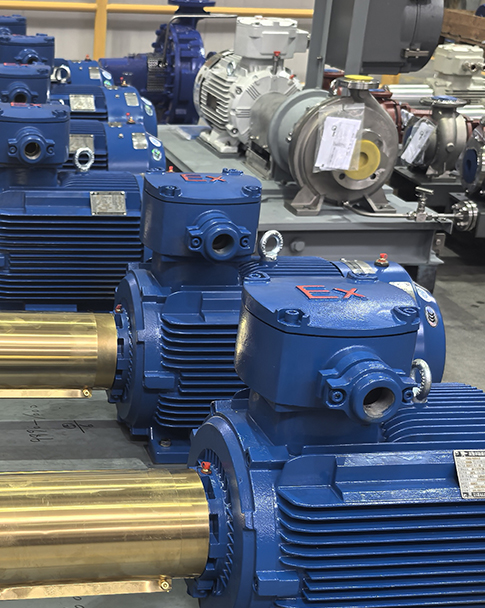
In power plant operations, pump selection is a crucial task, directly impacting the plant's proper functioning and efficiency.

First, consider the pump's flow rate requirements. This depends on the plant's size, the number of units, and the design requirements of the cooling and water supply systems. Accurately calculate the required maximum and average flow rates to ensure the pump can meet water demands under varying operating conditions.
Head pressure is also a key factor in pump selection. Factors such as the pump's installation location, delivery height, and pipeline resistance must be carefully considered to determine the appropriate head pressure to ensure smooth water delivery to the designated location.
Second, the pump's material selection is crucial. Due to the unique operating environment of power plants, which may involve high temperatures, high pressures, and corrosive media, high-temperature, corrosion-resistant, and pressure-resistant materials, such as stainless steel and alloy steel, are essential to extend the pump's service life.
Furthermore, the pump's efficiency directly impacts the power plant's energy consumption. High-efficiency pumps can meet flow and head requirements while reducing operating costs. Therefore, when selecting a model, you should pay attention to the efficiency curve of the water pump and choose a model with higher efficiency under common working conditions.

Reliability is also a key consideration. Power plants typically require continuous operation, and a pump failure can have serious consequences. Therefore, it's important to choose a brand and manufacturer with a strong reputation, proven technology, and comprehensive after-sales service.
Furthermore, the ease of installation and maintenance of the pump should be considered. Pumps that are easy to install and remove can reduce installation complexity and time, facilitating subsequent maintenance and upkeep.
When selecting a water pump, there are several considerations to keep in mind. Carefully review the pump's technical specifications and performance parameters to ensure they meet your needs. Also, understand the manufacturer's production processes and quality control procedures to ensure consistent pump quality. Before signing a purchase contract, clarify the details and duration of after-sales service, including repairs and parts replacement. Also, ensure the compatibility of the pump and its accompanying motor, ensuring the motor can provide sufficient power and that their speeds and power levels are compatible.
The following are some specific examples of water pump selection:
Case 1: Based on the design of its cooling system, a medium-sized power plant calculated a required flow rate of 500 cubic meters per hour and a required head of 80 meters. After comprehensive consideration, a stainless steel centrifugal pump with high efficiency and excellent after-sales service was selected. It performed well and met the cooling requirements.
Case 2: During a water supply system renovation at a large power plant, due to high pipe resistance and a high water supply height, a high-head, high-power multi-stage centrifugal pump made of alloy steel was selected to ensure long-term, stable water supply. Finally, the power plant budget should be considered when selecting a pump. Choose a pump with the best price-performance ratio while meeting performance and quality requirements.
In short, the selection of water pumps for power plants needs to comprehensively consider many factors such as flow rate, head, material, efficiency, reliability, installation and maintenance, precautions and budget, and make scientific and reasonable choices to ensure the safe, stable and efficient operation of the power plant.